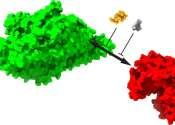Perivascular cells could induce microglial malfunction associated with Alzheimer's disease
Microglia are primary immune cells that safeguard the mammalian brain, partly by devouring or 'phagocytosing' pathogens and toxic debris. Recent genetic studies have consistently highlighted the role of microglia in the development ...









